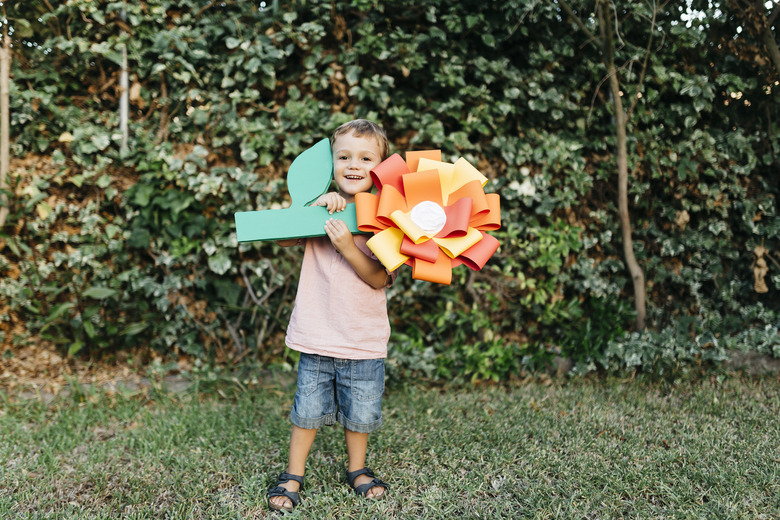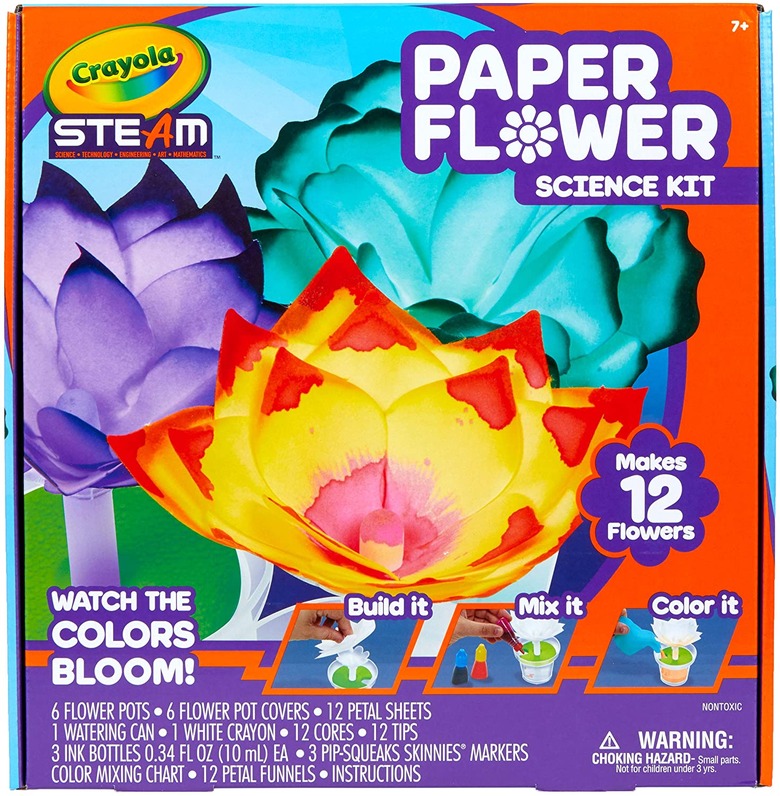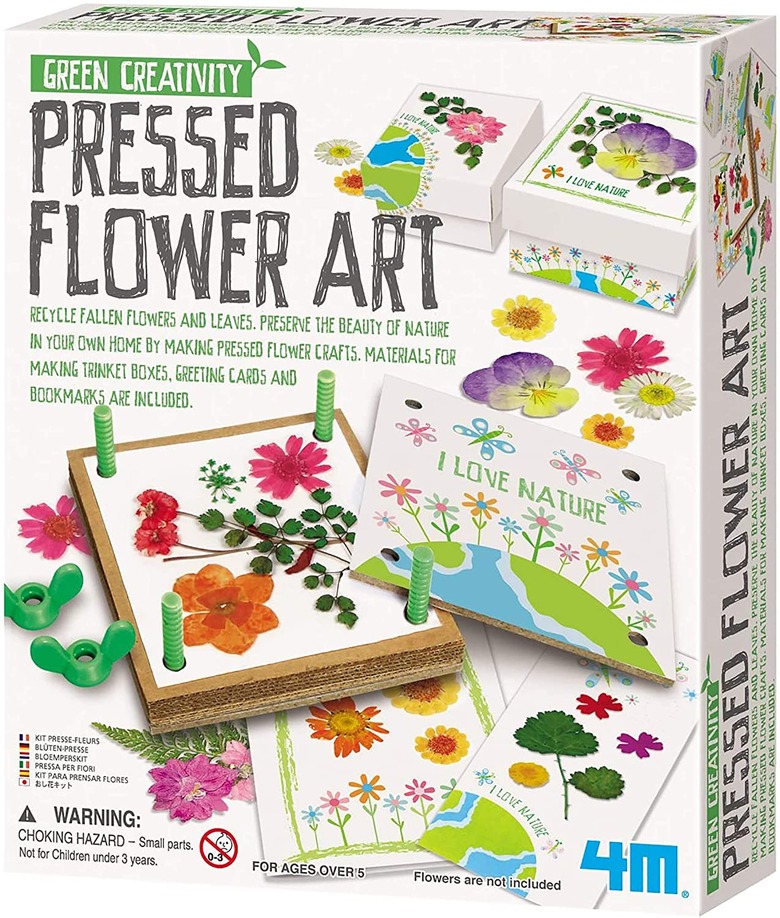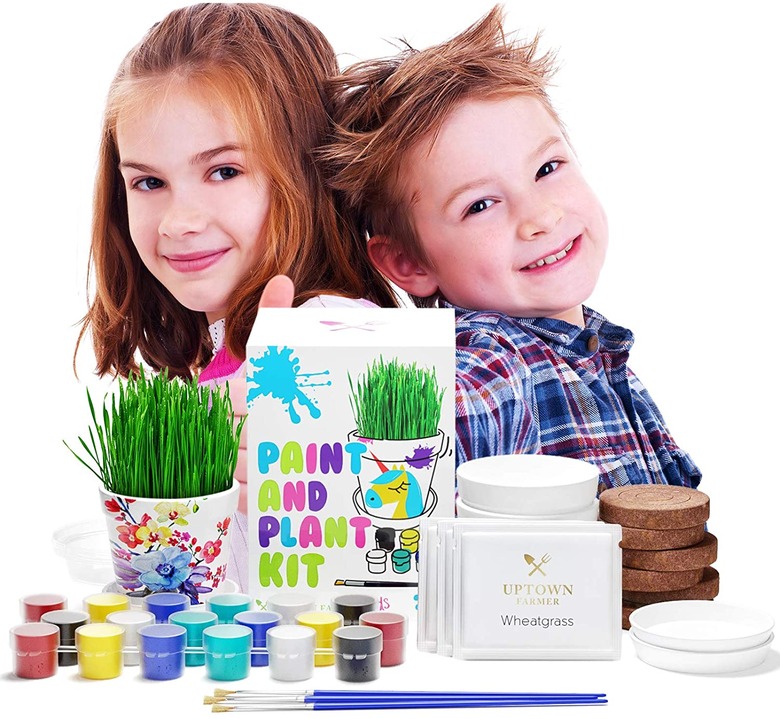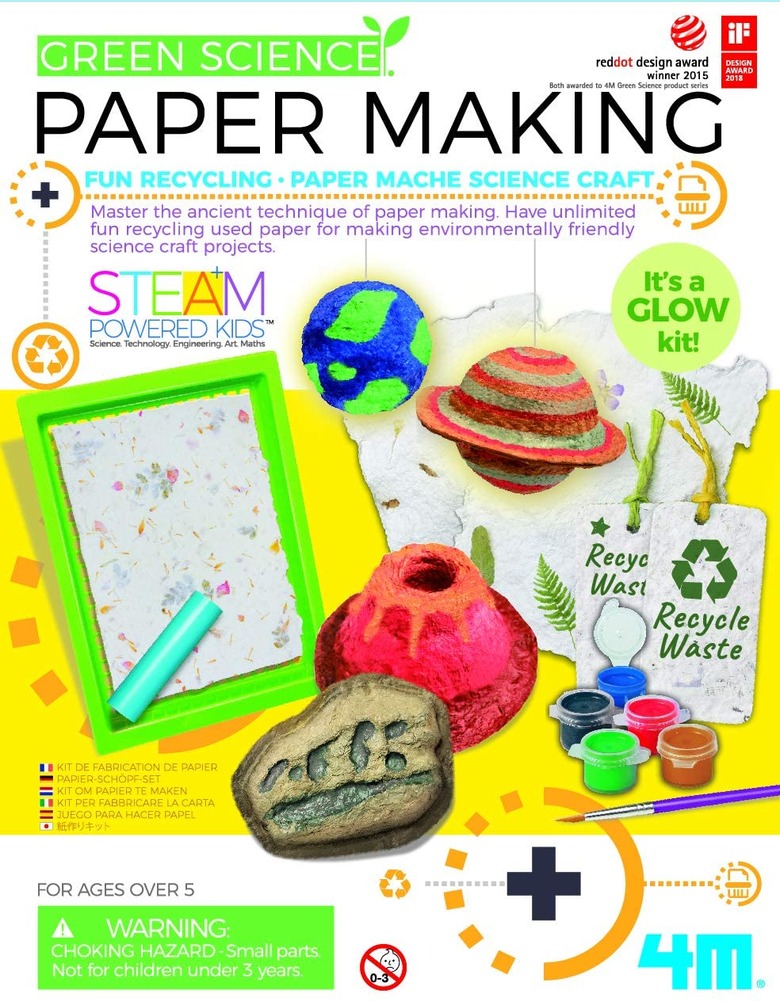Combine Physics With Art With This Crayola Paper Flower Science Kit
We may receive a commission on purchases made from links.
Here at Sciencing, we're big fans of crossover projects between the arts and sciences. After all, a big part of being a successful scientist is creative, conceptual thinking, and throwing yourself into an art project might be just what you need to think more creatively.
So we're big fans of this US&ref=as_li_ss_tl'>Crayola STEAM Paper Flower Science Kit, which makes it easy to create a "field" of vibrantly-colored flowers at home. Not only can the flowers be a great way to decorate your room – and add some refreshing color to your study space – but they're also a lesson in how flowers, trees and other plants work in real life.
First, What Do You Do With the Crayola STEAM Kit?
First, What Do You Do With the Crayola STEAM Kit?
Before we get into the science, let's chat about the arts and craft kit. It comes with 12 white wicking paper flowers, plus 6 "flower pots" to grow 6 paper "plants." You'll also get pink, blue and yellow safe, nontoxic dyes, which you can mix and match to create almost any color you want. Oh, and you'll get a color chart – so if you already know what color you want, you can make it easily.
Doing the experiment is easy. Simply assemble the paper flower in its pot, add the dye and wait. The paper will start to wick the dye upward, drawing it into each flower petal. You're left with a bright, fully-colored paper flower that matches the dye you added to the pot.
The Physics Behind the Experiment
The Physics Behind the Experiment
If you know about the law of gravity – the pull that keeps your feet on the ground, and keeps us from floating off into space – you might be a little confused right now. After all, gravity works on the lower dye, too, so how does it go from the bottom of the flower pot to the top of the plant?
For that, you can thank capillary action, or wicking – a concept of physics that explains liquid will move up a thin tube, even against the force of gravity. The thinner the tube, the stronger the wicking force, and the farther liquid can move up. In the paper flower science kit, the tubes in the wicking paper are small enough to draw liquid all the way up the stem and into the petals, so you'll see dye even at the very top of the flower.
And there's another force at play, too. Once the dye reaches the petals of the flower, it starts to evaporate. The liquid in the dye slowly turns to gas and drifts away, so the petals go from wet with dye to dry.
That evaporation causes a decrease in pressure, a phenomenon called depressurization. The pressure drops because the water that was in the petals evaporated – meaning there's now no liquid where there was plenty of liquid before. That causes liquid lower in the flower to move up to take its place, causing even more wicking.
You'll be able to see each stage of the experiment happening. The initial color moving up the flower thanks to wicking, the tips of each petal deepening in color as they draw in more ink thanks to depressurization, then eventually a dry flower and pot once all the dye has been wicked away and evaporated.
Why Wicking Is Important in Nature
Why Wicking Is Important in Nature
The ultra-bright paper flowers might not look incredibly realistic, but they're the perfect example of how plants work in real life. Think about it: You water a plant at the roots, but the plant has to get that water into all its other tissues – like its trunk, stems and leaves – in order to survive.
And plants do this via – you guessed it – capillary action. See, plants contain small tubes, called xylem, that run end-to-end throughout the entire plant. They wick water, and nutrients dissolved in water, up through the plant, so no part of the plant dries out.
At the same time, the leaves of the plant create depressurization. They use up water during photosynthesis (the process plants use to make energy from light). That makes leaves a "low pressure" zone for water, which draws even more water up from the base of the plant to replace it. Thanks to xylem, the leaves have a constant supply of fresh water so they can keep photosynthesizing and producing energy.
FYI – plants also have a separate system, called phloem, that allows them to transport materials up and down the plant. Differences in the structure of phloem prevent the same strong wicking you see in xylem, so phloem can transport materials from the top of the plant to the bottom, helped out by gravity. That's how plants transport the sugar produced in the leaves throughout the entire plant, so each cell gets the energy it needs to work.
Want to learn more? Check out this article on why water is so important for photosynthesis, and get ready to ace your biology test.
Check Out These Related Science Kits
Love when art and science mix? Pick up one of these fun kits after you've finished growing your rainbow garden.
Pressed Flower Art Science Kit
Pressed Flower Art Science Kit
Find new ways to appreciate the world around you by making your own flower decorations. Go on a walk around your neighborhood (or ask your parents if you can pick a flower or two from their garden) then preserve your treasures as pressed flower art.
**Available at Amazon:** US&ref=as_li_ss_tl'>4M Green Creativity Pressed Flower Art Kit
Plant Growing Kit for Kids
Plant Growing Kit for Kids
You've got a garden of paper flowers, now try growing the real thing. This kit comes with everything you need to grow wheatgrass (a plant related to the same wheat you make bread with). It also comes with paint to decorate your pot, so you can show off your art skills as you learn about the science of plant growth.
**Available at Amazon:** US&ref=as_li_ss_tl'>Uptown Farmer Kids Paint and Plant Kit
Paper Making Kit for Kids
Paper Making Kit for Kids
Of course, making paper flowers can be the first step to making your own paper, and this kit makes creating your own paper a breeze. Make sheets of paper you can write on, or turn it into a science project by making your own paper planets and dinosaurs with the included molds.
**Available at Amazon:** US&ref=as_li_ss_tl'>4M Green Science Paper Making Kit
Cite This Article
MLA
Tremblay, Sylvie. "Combine Physics With Art With This Crayola Paper Flower Science Kit" sciencing.com, https://www.sciencing.com/crayola-paper-flower-science-kit-13764455/. 4 June 2021.
APA
Tremblay, Sylvie. (2021, June 4). Combine Physics With Art With This Crayola Paper Flower Science Kit. sciencing.com. Retrieved from https://www.sciencing.com/crayola-paper-flower-science-kit-13764455/
Chicago
Tremblay, Sylvie. Combine Physics With Art With This Crayola Paper Flower Science Kit last modified August 30, 2022. https://www.sciencing.com/crayola-paper-flower-science-kit-13764455/
